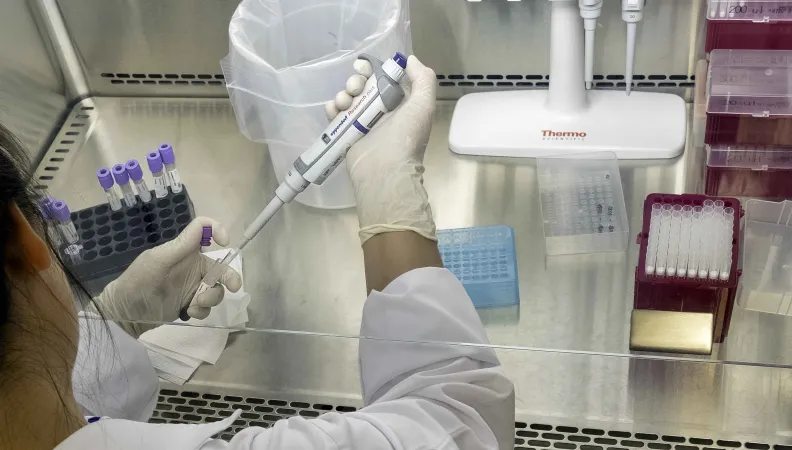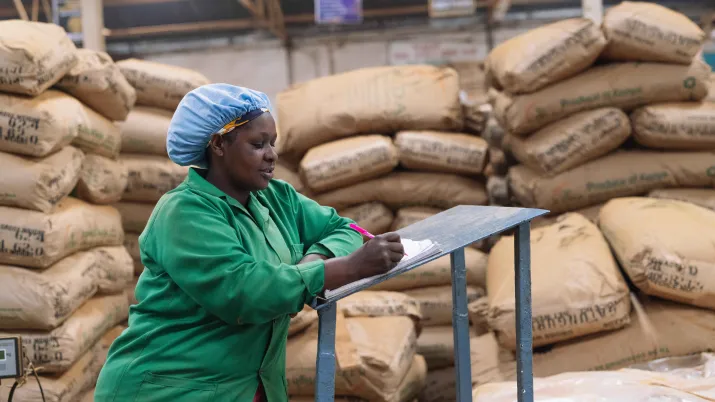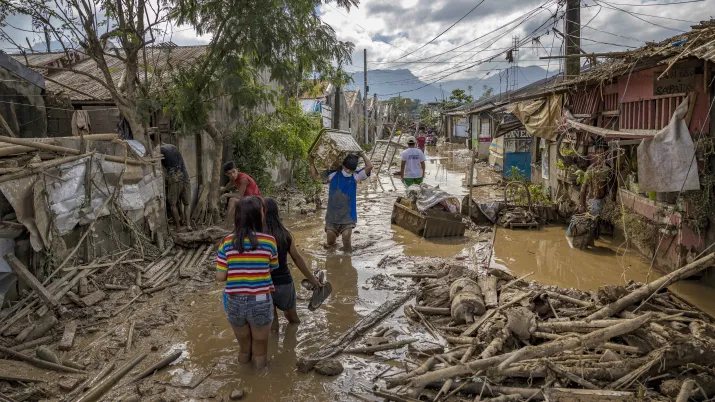Share the page
G7GP Kyrgyzstan 2 – Assessment of tick-borne arboviruses and bacterial diseases in Kyrgyzstan
Project
Published on

-
Project start date
-
Status
Ongoing
-
Project end date
-
-
Financing amount (Euro)
-
0.45m
-
Country and region
-
Kyrgyzstan, Asia and the Pacific
-
Funders
The second phase of the G7GP Kyrgyzstan project aims to combat bacterial diseases by establishing scientific cooperation with research institutes.
Epidemiological and biological issues in Kyrgyzstan
Kyrgyzstan is a Central Asian country particularly exposed to epidemiological risks due to the persistence of many infectious diseases, some of which have high pathogenic potential, such as Crimean-Congo haemorrhagic fever (CCHF). This viral disease is endemic in the region and is actively circulating, especially in rural and livestock areas. It is primarily transmitted by ticks of the Hyalomma genus, but can also be transmitted through direct contact with the blood or body fluids of an infected individual.
This virus is a class 4 pathogen, meaning that there is no effective medical treatment and that the mortality rate is high in the event of infection, as high as 30% of cases according to the World Health Organization (WHO). This virus is thereby a major public health issue and is one of the most monitored biological agents.
In addition to CCHF, Kyrgyzstan is also faced with other pathogens, such as malaria, plague and anthrax. Malaria, which is caused by parasites of the genus Plasmodium and transmitted by Anopheles mosquitoes, is re-emerging in certain areas, despite eradication efforts. The plague, a bacterial disease caused by the infectious agent Yersinia pestis, still circulates sporadically in certain remote regions, especially through rodents and their fleas. Anthrax is a zoonosis caused by Bacillus anthracis bacteria, which can infect humans through skin contact, inhalation or ingestion, especially in livestock areas where the disease is endemic.
The G7GP Kyrgyzstan 2 project: Studying endemic pathogens in Kyrgyzstan
To address these issues, the G7GP Kyrgyzstan 2 project involves a scientific collaboration that aims to:
- More accurately characterise the natural biological risk in this part of the world
- Assess its evolution by studying tick populations, especially their prevalence, dynamics and pathogen carriage rate
- Enhance knowledge about the microbial pathogen species and strains present in the country through their genetic sequencing
A project that follows on from the first phase
This “G7GP Kyrgyzstan 2” project follows on from the “G7GP Kyrgyzstan 1” project implemented between 2015 and 2018, which aimed to monitor the presence and spread of several bacterial pathogens among rodents and other wild animals in the protected areas of Kyrgyzstan.
Several collection campaigns were organised to gather samples from rodents and bats. The extractions were carried out at the Institute of Biotechnology of the National Academy of Science of the Kyrgyz Republic which, along with the IRBA (French Armed Forces Biomedical Research Institute), worked on the detection of four bacterial pathogens: Bacillus anthracis, Brucella spp., Francisella tularensis andLeptospira spp.
G7 Global Partnership
The G7GP Kyrgyzstan 2 project is part of the G7 Global Partnership (G7GP) Against the Spread of Weapons and Materials of Mass Destruction. Launched in 2002, this partnership finances and coordinates initiatives to secure sensitive materials which may be used in the creation of weapons of mass destruction.
The G7GP projects implemented by Expertise France since 2015 aim to develop scientific cooperation with foreign research institutes.





